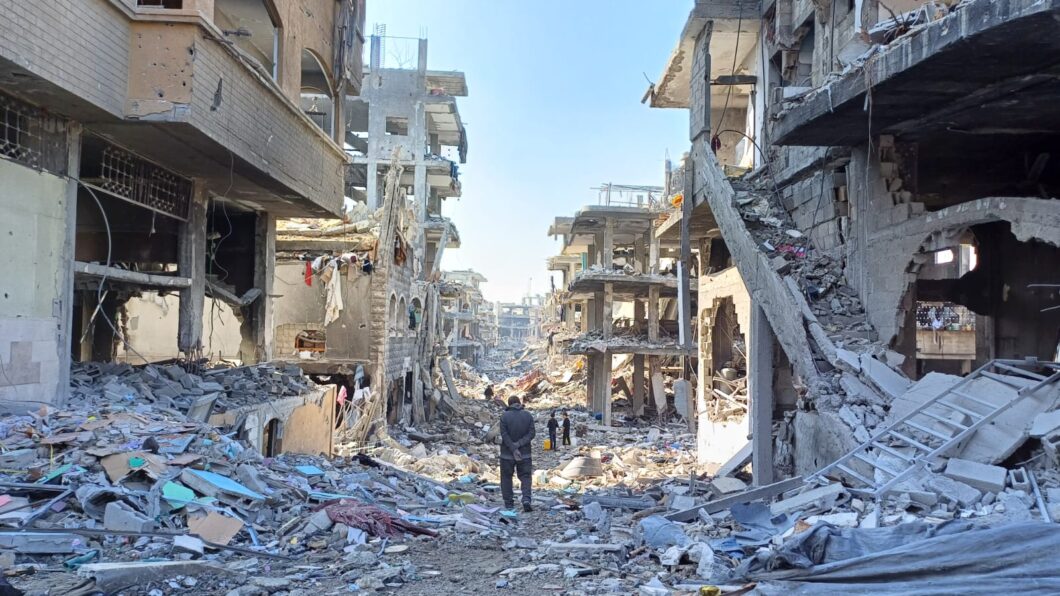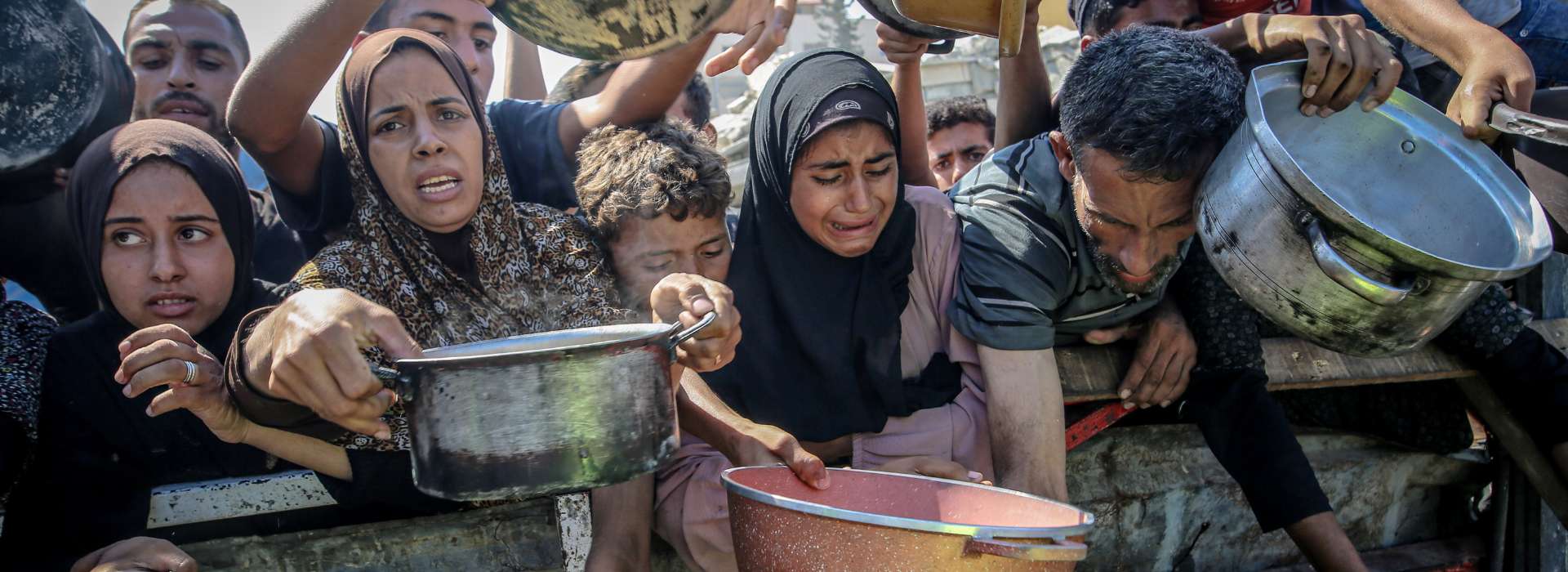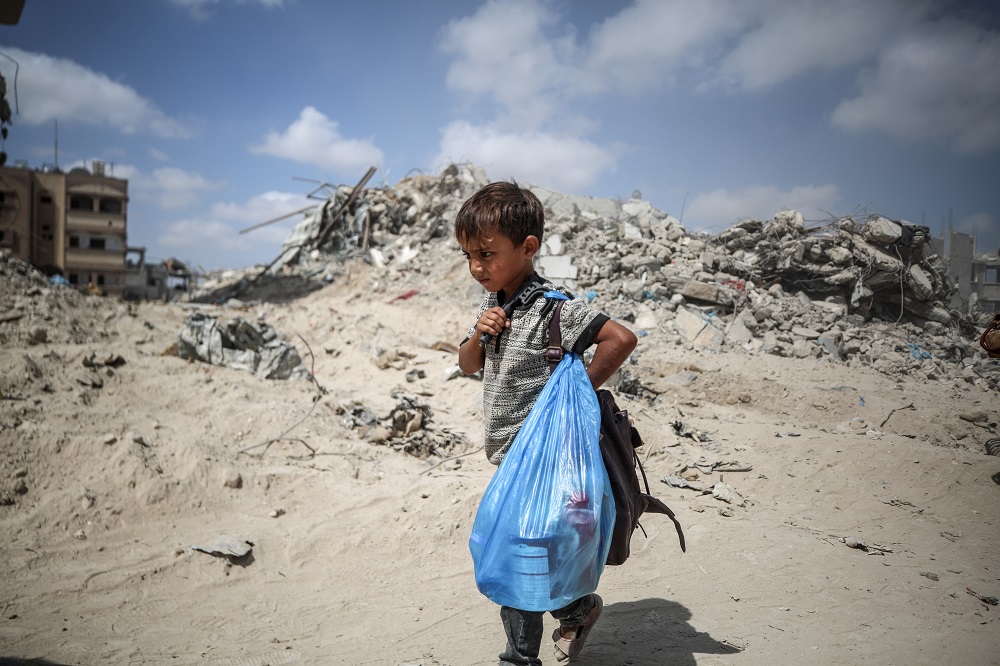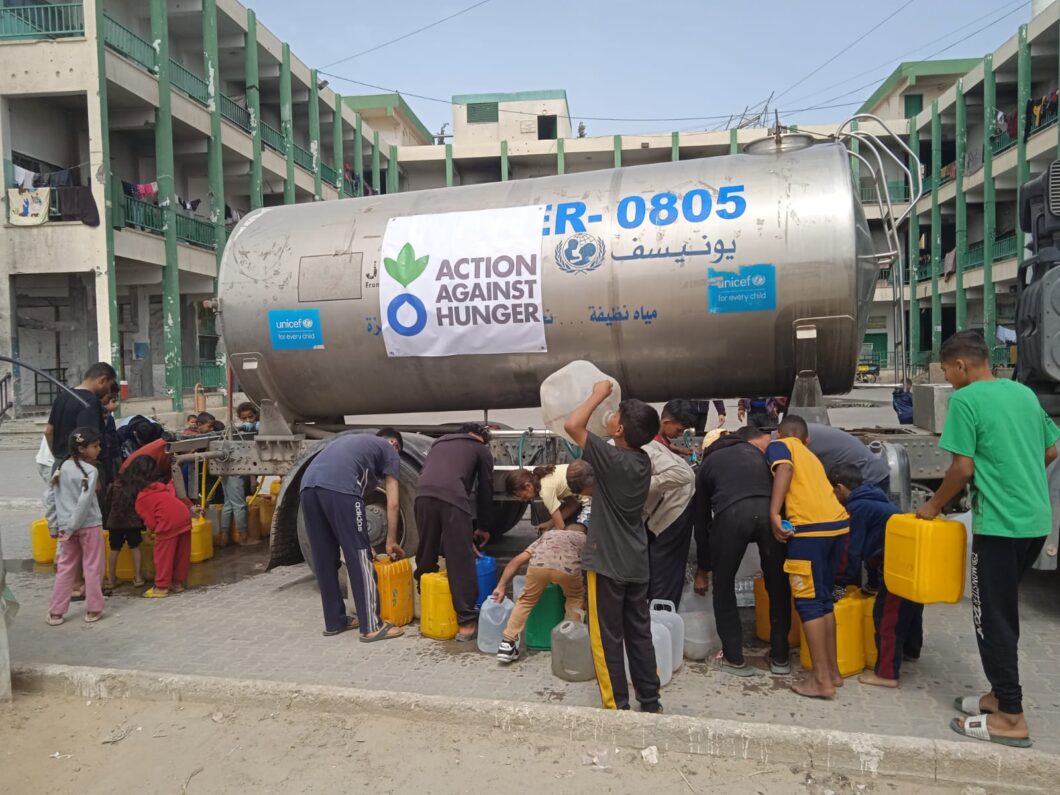As mass starvation spreads across Gaza, our colleagues and those we serve are wasting away

More than 100 organisations are sounding the alarm to allow in life-saving aid.

As the humanitarian crisis in Gaza deepens, we know many of you have questions.
Read the answers to the most frequently asked questions about our work in Gaza and the occupied Palestine territories, how we're responding, and how your emergency donation to Gaza helps.
Action Against Hunger has worked in Gaza since 2005 and in the occupied Palestinian territory, including the West Bank and East Jerusalem, since 2002.
Over the past year, our teams have operated under extreme, life-threatening conditions to deliver essential aid to internally displaced and vulnerable Palestinians, including:
We’ve also constructed latrines, installed handwashing facilities, and carried out solid waste removal to help prevent malnutrition and disease.
Thanks to you and our teams, we’ve reached over 900,000 people in Gaza, nearly half of them children.
Sustained operations require urgent and ongoing funding. While only limited aid, primarily food parcels, hygiene kits, and minimal water, is currently permitted into Gaza, we continue to procure and preposition supplies, support local partners and work with trusted contractors in the Strip.
We are also scaling up cash assistance through Multi-Purpose Case Assistance (MPCA) to households and local organisations who are supporting the population so that they can buy supplies based on their activities.
Cash assistance allows families in Gaza, many of whom have lost income and face soaring inflation, to purchase critical items available locally, including food, shelter materials, and clothing.
Although aid entry remains constrained, targeted cash assistance ensures flexibility, dignity, and responsiveness to local needs. We continue to carry out assessments to be able to identify the changing environment and needs and plan our response accordingly.
Our work continues because of our donors. We are constantly assessing conditions to adapt our response. But without stable access and funding, the risk of total humanitarian collapse remains high.
Action Against Hunger remains deeply committed to addressing the humanitarian crisis in Gaza and has not and will not endorse, nor agree to collaborate with any mechanism that does not comply with fundamental humanitarian principles.
We firmly support the UN-coordinated response as the most viable, principled, and immediately actionable framework for large-scale aid delivery. This system has been tested, is already operational, and remains the best pathway to reach those most in need without delay. We cannot afford to divert attention or resources from proven mechanisms when lives hang in the balance.
We urgently call for:
Action Against Hunger continues to advocate for all parties to uphold international humanitarian law and ensure the protection of civilians in Gaza
Over 60,000 Palestinian and Israeli lives have been lost since the start of the conflict in Israel and the Occupied Palestinian Territories. Added to this, a lack of shelter, food, water and sanitation is increasing the risk of famine and the spread of disease.
Meanwhile, the amount of aid trucks entering Gaza are nowhere near enough to provide for the rising level of need for food, water, sanitation and fuel.
Before the conflict, 500 trucks entered Gaza every day. We’re now seeing a fraction of that and a greater risk of aid supplies being destroyed due to the almost constant barrage of bombardments.
Humanitarian aid workers are also dying in the conflict at unprecedented rates. The serious risk to workers’ lives poses a major barrier to the delivery of aid.
Given that ceasefires are legally binding and are key for us to provide aid and save lives over a longer timescale. Humanitarian pauses on the other hand are far more likely to be breached and don’t last as long – even after lengthy periods of negotiation to enforce them.
A ceasefire is the immediate aim right now in a conflict that’s at risk of becoming longer, more complex, and fatal to thousands of people.
Page last updated: 8 August 2025

Our teams are still in Gaza delivering food, water and nutrition support. They’re trying to reach as many people as possible with whatever resources they have available.
Your donation today will help us to continue our work in supporting vulnerable Palestinians in Gaza.
Explore our most recent announcements on Gaza and learn how we're reacting to protect lives in one of the most challenging humanitarian environments in the world.

More than 100 organisations are sounding the alarm to allow in life-saving aid.

Mohammed Hussein and Obada Abu Issa, were killed by an Israeli airstrike within a highly populated area of Gaza.

Fuel shortages in Gaza threaten clean water for 78,000 people, with vital infrastructure near collapse.